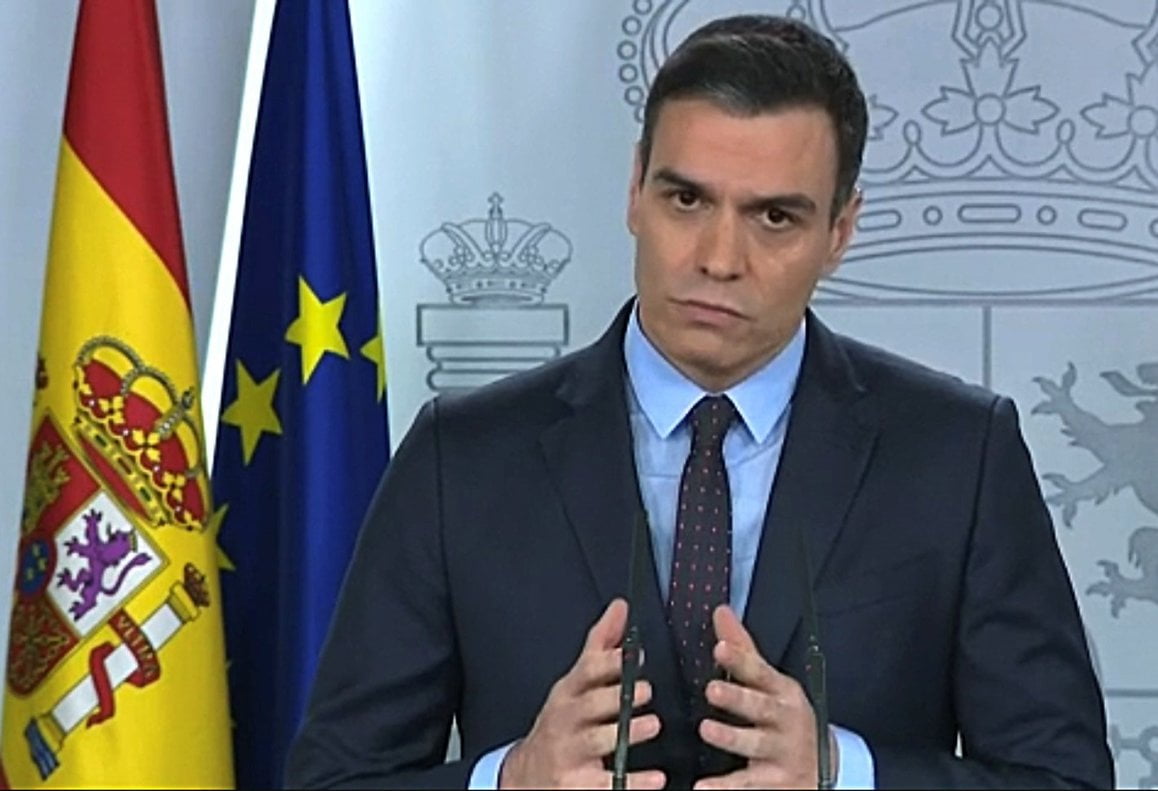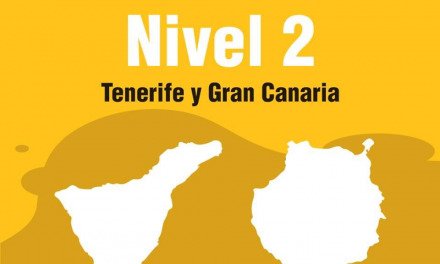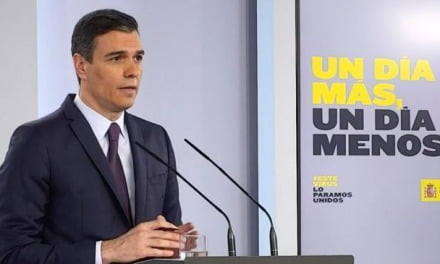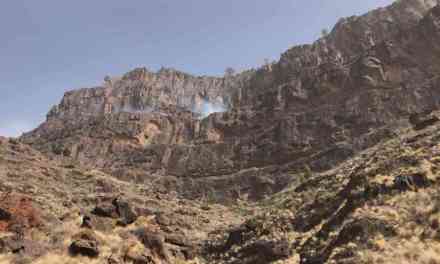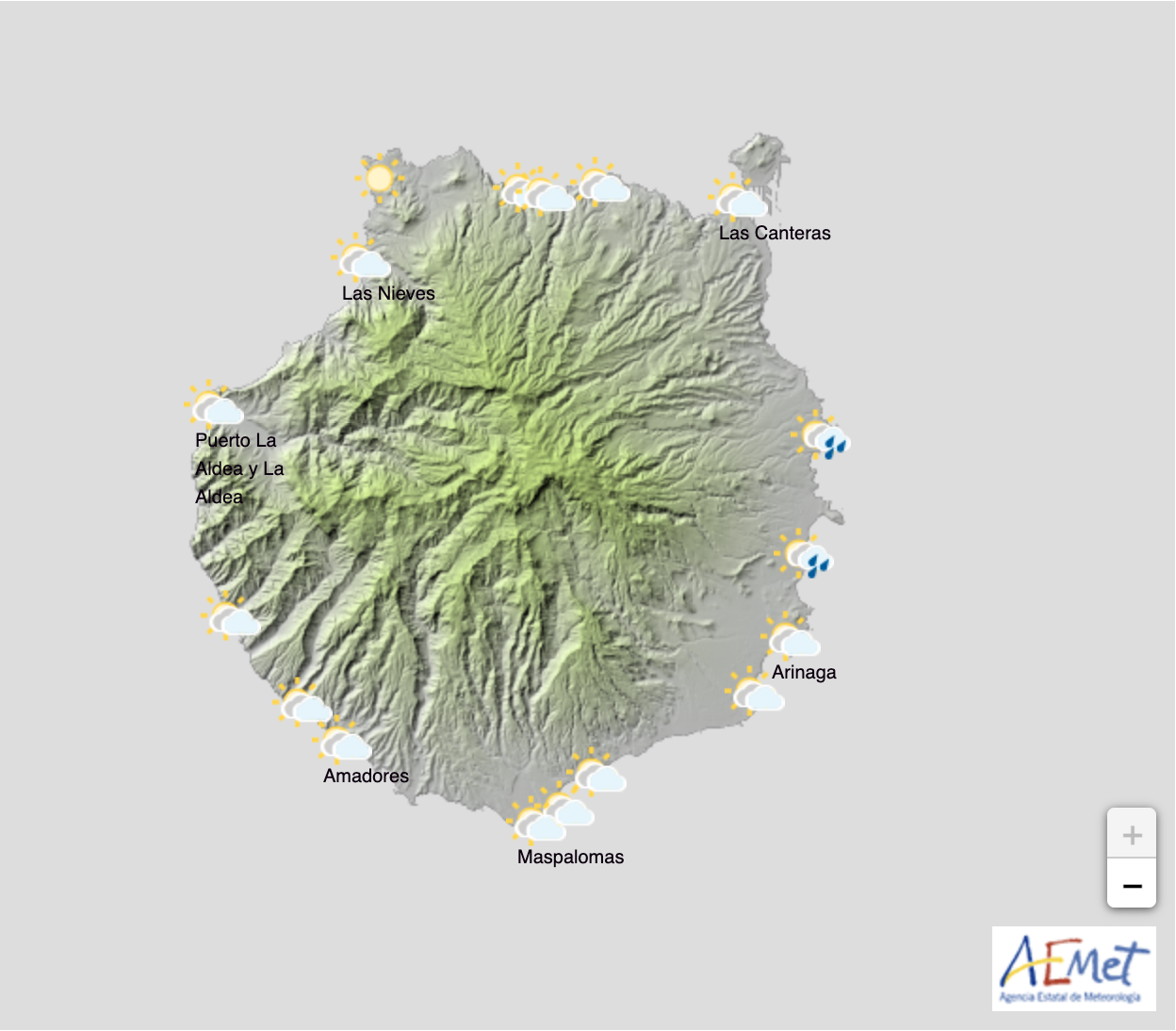 Spain’s Prime Minister, President of the Government, Pedro Sánchez, at a press conference on Tuesday evening, April 28 2020, explained the government’s plans for the de-escalation of coronavirus confinement measures in Spain. The measures include ongoing limits on mobility until potentially at the end of June, meaning people will, for now, still not be able to visit family members or their second residences if they are in another province.
Spain’s Prime Minister, President of the Government, Pedro Sánchez, at a press conference on Tuesday evening, April 28 2020, explained the government’s plans for the de-escalation of coronavirus confinement measures in Spain. The measures include ongoing limits on mobility until potentially at the end of June, meaning people will, for now, still not be able to visit family members or their second residences if they are in another province.
Sánchez began by expressed remorse for the loss to Spanish society and the victims of the coronavirus, and explained with pride how Spain had so far managed to “flatten the curve of the spread of the epidemic.” All Spanish territories have been on some of the toughest lockdown restrictions in Europe since March 14.
“The ‘Plan for the Transition Toward a New Normality’ on which we have been working for nearly a month, was today approved by the Cabinet,” he continued. “We have taken into account the lessons from other places, but adapting them to the diversity and the reality of our country.”
The prime minister stated that the “only objective of this de-escalation plan is to activate Spain protecting the health and lives of Spaniards.”
The plan, he continued, will be “gradual, asymmetrical… and coordinated.” He paid tribute to the victims of the coronavirus – officially 23,822 dead, according to the latest figures.
“There is to be no mobility between provinces or islands until normality returns,” he explained, saying that there would be four phases, but with no set dates so as to be flexible according to the situation.
Each phase of the de-escalation plan will last at least two weeks, and in the best-case scenario, the process will last eight weeks throughout Spain
The first phase, Phase 0, he said, will begin on Monday May 4, and will involve the reopening of small businesses such as restaurants that can offer food to take away, and businesses that can take bookings. This will include establishments such as hardware stores (ferreterias), said government sources as an example.
 Customers will have to make an appointment by phone to be able to buy particular products. Only one customer is to be permitted on the premises at a time and they will need to be served by a sales clerk behind a screen or a counter. Perspex screens have become a feature of most customer facing cashier desks in businesses across Spain and The Canary Islands, as has the prevalence of PPE Personal Protective Equipment in supermarkets and anywhere that clients and staff need to interact.
Customers will have to make an appointment by phone to be able to buy particular products. Only one customer is to be permitted on the premises at a time and they will need to be served by a sales clerk behind a screen or a counter. Perspex screens have become a feature of most customer facing cashier desks in businesses across Spain and The Canary Islands, as has the prevalence of PPE Personal Protective Equipment in supermarkets and anywhere that clients and staff need to interact.
This starting phase will include the reopening of hairdressers, albeit with employees expected to use the “maximum level of individual protection,” such as masks and gloves.
Individual classes will also be allowed in gyms, as well as individual training for federated sports players and professional leagues.
The next phase, phase 1, will “allow in each defined territory the partial reopening of small businesses under strict safety measures, but not large shopping malls, where big crowds could form.”
Sanchez added that this also includes the opening of hotels and tourist apartments, not including common areas. As of yet there has been no clear plan put forward for exactly how tourism is to begin operating again, though the Secretary of State for tourism has been speaking to the industry in an effort to formulate the next steps in this area. Cafés and restaurants will also be able to open their outdoor areas, on terraces and pavements, under this phase, however they will be expected to operate at just 30% of their official client capacity, and entry into the building will not yet be permitted.
 Mobility within each province will also be permitted under Phase 1, the Prime Minister stated clearly several times that each province and each island will be monitored individually as a specific measure of reference, and so it is likely to fall to co-ordination between local and regional governments, with the Central Government in Madrid, to assess and decide when they may be ready to move to the next stage. That is to say, if the first phase lasts for the two weeks expected, people may begin to visit friends and family, within the same province, from May 11 at the earliest.
Mobility within each province will also be permitted under Phase 1, the Prime Minister stated clearly several times that each province and each island will be monitored individually as a specific measure of reference, and so it is likely to fall to co-ordination between local and regional governments, with the Central Government in Madrid, to assess and decide when they may be ready to move to the next stage. That is to say, if the first phase lasts for the two weeks expected, people may begin to visit friends and family, within the same province, from May 11 at the earliest.
There is to be a “timetable for the over-65s” to facilitate their being able to shop in retail establishments, he added, on the basis that they are an “at-risk group” from Covid-19, while the use of masks on public transport “will be strongly recommended.”
Religious venues and churches will be able to open during phase 1, again limited to 30% of their capacity, the prime minister said.
 The third phase in the plan, Phase 2, will see hospitality establishments begin to be able to open their dining areas, at one third of their official capacity. Schools throughout Spain will not fully reopen until September, but Sánchez explained that they would try to guarantee that children aged under the age of six will be able to attend classes if their parents need to go to work, and that older students should be able to complete their university application processes and exams.
The third phase in the plan, Phase 2, will see hospitality establishments begin to be able to open their dining areas, at one third of their official capacity. Schools throughout Spain will not fully reopen until September, but Sánchez explained that they would try to guarantee that children aged under the age of six will be able to attend classes if their parents need to go to work, and that older students should be able to complete their university application processes and exams.
Sports players will also see fewer restrictions under Phase 2.
“Cultural events will be possible with fewer than 50 people in interior spaces, and for open-air events, there will have to be 400 people or fewer, and they will have to be seated,” Sánchez explained.
Cinemas and theaters will start to reopen under Phase 2, again at a third of their official client capacity, who will be allowed to enter the premises and be assigned seating.
The final part of the plan, Phase 3, should be seen as “the advanced phase,” he continued, “once the requisite markers have been met,” with cinemas and theaters, for example, allowed to operate at 50% of their capacity. “General mobility will be relaxed,” he added, though it will still be very much recommendable that all passangers wear masks on public transport.
Under this final Phase 3, the capacity of shops and other public-facing businesses will also be limited to 50%, with an inter-personal distance of two meters expected to be enforced. Restrictions will be further relaxed for bars and restaurants.
 Each phase will last at least two weeks, he said, to match the accepted incubation period of the coronavirus, and in the best-case scenario, the entire process will last eight weeks throughout all of Spain.
Each phase will last at least two weeks, he said, to match the accepted incubation period of the coronavirus, and in the best-case scenario, the entire process will last eight weeks throughout all of Spain.
“By the end of June, as a country we will have arrived in the new normality, if the evolution of the epidemic is under control in all territories,” he said. “This weekend individual physical activity [for adults] will be allowed, as will [going out for] walks. On May 4, all territories will enter Phase 0, and based on the low number of infections and if their progress allows for it, Formentera, in the Balearics, La Gomera, El Hierro and La Graciosa, in the Canary Islands, will enter Phase 1 shortly after.
Mobility within a province will be permitted only under Phase 1, which will begin by May 11 at the earliest
“On May 11, all of the provinces that meet the requisites will enter Phase 1, and the Health Ministry will evaluate the markers on a two-weekly basis.
“There is no final and uniform calendar, and we will advance in each place as quickly as the epidemic permits,” he said. “When we have concluded the de-escalation we can say that each province has reached a situation of new normality until a vaccine arrives.”
Home-working will be preferable until at least reaching Phase 3, he added.
 The markers and measures the prime minister referred to will be based around “the capacity of the country’s health systems, the epidemiological situation in each area, protection measures in the workplace, business and public transport, mobility and socioeconomic data.” These markers are to be made public, he added, “and transparent.”
The markers and measures the prime minister referred to will be based around “the capacity of the country’s health systems, the epidemiological situation in each area, protection measures in the workplace, business and public transport, mobility and socioeconomic data.” These markers are to be made public, he added, “and transparent.”
The prime minister made clear that it would be the central Health Ministry, and not Spain’s regional governments, who would be deciding on the speed of de-escalation in each province, despite several regional governments, including The Canary Islands, calling for such powers. “If we have to choose between prudence and risk, we opt for prudence,” he stated.
The virus, the prime minister said, “has not gone anywhere. It is still there lurking. With our behavior, we can save lives. We can protect our lives and help to rebuild our country. That is, right now, the best kind of patriotism.”
The four phases of the deescalation, Sánchez explained, are designed to be “a gradual, asymmetrical, coordinated and adaptable approach.” “The adaptability is because we don’t know what we are facing. Science still doesn’t know a lot of things about this virus. As such, we are facing [a challenge] that we don’t know, and that is why we have to be cautious.”
Movement between provinces has to be restricted, Sánchez explained, to avoid the spread of the virus from area to area. “Imagine that one province is in Phase 1 and another in Phase 3,” he said. “Mobility cannot be permitted to go and meet with a relative or friend.” Mobility between provinces would return “once we reach the phase of the new normality,” he added – i.e. when the de-escalation is over.
Sánchez explained that another two-week extension to the State of Emergency, implemented on March 14, would be requested in Congress. The current period is due to expire on May 9.
Translation courtesy of Nicky Gordon04/28/2020
SPEECH BY THE PRESIDENT OF THE GOVERNMENT.
Good afternoon. First of all, I want my first words to express the feelings of the whole of Spanish society for the loss of 23,822 lives of our compatriots over the past two months.
They constitute a source of deep pain for their families and their relatives and a deep sense of sorrow for all Spaniards. Due to the tears caused by their loss and due to the harsh circumstances in which it has occurred.We have a double debt to all of them: first, to pay them the tribute that overcoming and submitting to the enemy that took their lives from us; and second, to pay public tribute to his memory of all Spanish society when the epidemic is fully controlled and we can all participate in that tribute. You have my word that it will be so.
It is an outcome that we are beginning to see these days and that will be the reward for the gigantic collective effort that we have waged in the last six weeks.
In this sense, the numbers of new infections and the situation of our health system confirm that we have managed to bend the propagation curve of the epidemic.
In the same sense, the numbers of registered people lost which in a sustained way exceed the number of new infected daily. And next to them, a figure, impossible to determine, but with high security and is that of the thousands and thousands of Spaniards whose lives we have saved thanks to the selfless work of the health workers and the effort and sacrifice of Spanish society.
For this reason, the Plan for the Transition towards a New Normality on which we have been working as the Government of Spain for about a month has become fully current and has been approved in the Council of Ministers held today.
Before explaining the Transition Plan in its general lines, I would like to make several considerations about its preparation:Firstly, the main international experiences available have been analyzed, in order to identify the best practices to tackle economic and social reactivation with maximum security.
In this sense, the common roadmap for lifting the containment measures of COVID-19 presented a few days ago by the European Commission, in line with the recommendations of the World Health Organization, has been and is for the government from Spain a key reference.
Secondly, the teachings of other places have been taken into account, but always to adapt them to the reality and diversity of our country.All with a single and exclusive objective that is to recover daily life and economic activity without putting collective health at risk.
I want to emphasise that the sole purpose of this Plan of De-escalation is to put Spain into action, protecting the health and life of the Spanish. The sole purpose is to access the New Normal until we find the vaccine keeping our health system safe.
For the elaboration of the Plan we have obtained the opinion and proposals of experts in the scientific, health, social and business fields. Parallel and coordinated, meetings have been held and proposals and ideas exchanged with those responsible for administrations.
Of the autonomous ones, of course, but also of the provincial and local ones. Therefore, this Plan is the result of collaborative work and also shared between different institutions and the private sector as a whole: unions, employers, civil society in a broad spectrum.
Having made these preliminary warnings, let me answer the question of my last appearance on Saturday that is pertinent to ask again: What will be the de-escalation that is designed in the Plan that the Council of Ministers approved today?
As I said on Saturday, that transition, that de-escalation, will be first, gradual, second, asymmetric, that is, differentiated according to the territories, because the evolution of the epidemic is different and finally coordinated, because it is necessary to work side by side the different administrations in this very important challenge that we have ahead of ourselves.
In my last appearance I also expressed to you that we will recover gradually, that activity and social mobility will not be suddenly, but that we will do so in stages. So the first idea is that it will be gradual.
The unit will be, in principle of action, the province or the island. There will be no mobility between provinces or islands until the new normality is reached, except in those cases that are already excepted in article 7 of the Alarm State that was approved on March 14. All the permitted activities can be carried out, therefore, in the province or on the island where you live.
Specifically, I announce that four phases have been established throughout this de-escalation or transition that we are going to walk throughout the coming weeks.
The first phase, or Phase 0, is the phase of preparing the transition or the de-escalation, in which we are already finding ourselves. It is the preparatory phase in which in addition to the common relief measures for the whole country, which we have approved and which have already begun to benefit the whole of Spanish society, such as, for example, the recent measure approved for minors or the projected one For the next May 2 of departures and individual exercises of adults, small gaps of economic activity will be opened.
For example, the opening of premises and establishments by appointment for individual customer service. A clear case that I think may be perfectly understandable is the opening of restaurants with food service to be able to take home, without consumption on the premises. The service, of course, must be provided with the maximum individual protection.
Another example would be the opening of individual trainings, of professional and federated athletes and the basic training of professional leagues. Throughout this phase, from Phase 0, from the preparation phase to that de-escalation, the preparation of all public premises with signage and protection measures will be intensified to prepare for the start of the next phase, which is the Phase I.
Phase I or initial phase, depending on the criteria that I will describe later, will allow in each defined territorial space, in principle the province, the partial start of certain activities.
Some of these activities are the opening, for example, of small businesses under strict security conditions, except for centers or large commercial parks, where crowds are more likely and mobility to travel to them is more increased; in restoration, the opening of terraces with occupancy limitations of 30%; in hospitality, the opening in this first phase of hotels and also tourist accommodation excluding common areas and with certain restrictions that will be raised in the subsequent Order by the Ministry of Health.
In the opening of premises in Phase 1, I already tell you that a preferential schedule will be included for people over 65, who are the most vulnerable group to Covid-19.
In the agri-food sector and in the fishing sector, on the other hand, the activities that maintained restrictions will resume.And to continue with the examples, places of worship may open by limiting their capacity to one third.
In the sports field, the opening of high-performance centers with reinforced hygiene and protection measures and, if possible, shifts, is contemplated, and medium training in professional leagues will also be allowed. In the case of public transport, the use of the mask will be highly recommended, both in phase 0, as in Phase I, as in Phase II, as in Phase III and then, logically, in the new normality.
Phase II is the intermediate phase: if the conditions and the stipulated markers are met, in restoration, the interior space of the premises will be opened with an occupation of a third of the capacity and guarantees of separation and only for table service.
The school year will begin in September. Now, in this Phase II we have established some exceptions to reopen educational centers with three purposes that I am convinced that you will be able to share: the first is that of reinforcement activities, the second is to ensure that children under the age of six years can attend the centers in case both parents have to work in person and, logically, also to celebrate the EBAU.
To continue with the examples, the resumption of hunting and sport fishing is expected. And as for leisure and culture, cinemas, theaters, auditoriums and similar spaces will be reopened with a pre-assigned seat and a one-third capacity limitation.
Visits to monuments and other cultural facilities such as exhibition halls, such as conference rooms, with a third of their usual capacity, will also be possible in this phase.
And cultural acts and shows of less than 50 people can be held in closed places with 1/3 of capacity; and if it is outdoors they will be possible when they gather less than 400 people, as long as they are seated.Places of worship must limit their capacity to 50% in this second phase.
• Phase III is the advanced phase: In this phase, the last one until the New Normality is recovered, once the required markers are met, general mobility is made more flexible, although the recommendation for the use of the mask outside the home will be maintained. and in public transport.
And as for the commercial area, the capacity will be limited to 50% and a minimum distance of 2 meters will be set. In the activity related to the restoration, the restrictions of capacity and occupation are relaxed somewhat, although strict conditions of separation between the public are maintained.
As you can see, the regulation is very tedious because the casuistry is very broad and I have cited some cases for illustration. Subsequently, the corresponding Orders will be issued by the Ministry of Health to establish the rules and detail all the assumptions and their conditions.
From these bases, I also announce the duration of the de-escalation. It is important to note something that we have learned in these months of battle with the virus, and that is that each of the 3 phases described will last a minimum of two weeks. Two weeks, why? Because it is the average incubation period for the virus.
What does this mean? It means that in the best of cases, the stage of de-escalation, transition to that new normality, will have a minimum duration, in each territory, of six weeks, approximately, therefore, one and a half months. And the maximum tentative duration, in the event that everything goes as before, that’s why I want to say it in brackets, and with the utmost caution, we want it to be eight weeks for the entire Spanish territory.
Therefore, at the end of June we would be as a country in the new normal if the evolution of the epidemic is controlled in each and every one of the territories.
The horizon and the perimeter, therefore, are audited and planned. The Government of Spain has a clear horizon and strategy.
The next weekend will allow, as announced in my last appearance, individual physical activity and walks with people who live together, as long as the evolution is as before.
Next Monday, May 4, we would enter phase 0 in all the territories and given the minimum incidence of infections and if evolution also allows it, the island of Formentera in the Balearic Islands and the islands La Gomera, El Hierro and La Graciosa in The Canary Islands will anticipate a few days, to the fourth of May. its de-escalation located in Phase 1. Therefore, except for these islands, the whole of Spanish territory will be on May 4 in Phase 0.
These islands located in both the Canary Islands and the Balearic Islands will be from May 4 in Phase 1 that I have previously described.
On Monday, May 11, all the provinces that meet the requirements of the Comprehensive Panel will go directly to Phase 1. And from here every two weeks, the Ministry of Health will evaluate, also in coordination with the Autonomous Communities, the fulfillment of the markers for each one of the provinces or islands until approaching the tentative calendar.
We enter, as I said in my last appearance, together and we will leave together as a country. And if we do it together and coordinated, I am convinced that we will achieve it much sooner than we initially planned.Unlike what has happened during the general confinement, as you can see, in the de-escalation we will not all advance at the same speed, but we will do it with the same rules. We will descend as a team. We will descend at different speeds, asymmetrically but we will do it in a coordinated way. We will measure each week, week by week, each step in each place and before continuing, we will consolidate the previous steps.
Consequently, there is no final and uniform calendar for de-escalation.
We will advance in each place as fast as the control of the epidemic allows; and logically as slow as the protection of citizens’ health requires.At the conclusion of these three phases in each territory, the de-escalation will have concluded and we can say that each province or territorial unit has agreed to the new normal situation, while, logically, as I said at the beginning of my intervention, the vaccine or remedy that extinguish the virus.
At that time, social and economic restrictions will end, but epidemiological surveillance will be maintained and, above all, hygiene and personal protection measures that must persist until we have, as I said before, a vaccine that protects us against the virus.
Secondly, as I have told you, de-escalation has to be asymmetric. It should be asymmetric. The pandemic; as I have said on many occasions, and thanks to the uniform, homogeneous response that we have given throughout the territory; the pandemic has unevenly hit our country. And the sanitary defences of the different areas are not in the same state.On the other hand, it is logical that the geographic, economic, demographic diversity of our country and the broad decentralization of our administration discourage a homogeneous de-escalation chosen by, for example, other countries. Therefore, the de-escalation, the transition towards this new normality, will not advance at the same rate throughout Spain, not even in each of the Autonomous Communities.The start of phase I, the transit to phase II and from this to phase III and the total de-escalation will not be uniform, consequently, throughout the territory.
The ordinary territorial unit, as I have said before, will be the province, but exceptions will be possible if they are motivated by the Autonomous Communities and have the acceptance by the delegated authority, in this case, the Ministry of Health. And this territorial unit will be where each phase advance will take place based on the objective criteria that I will define later. This asymmetry allows us to adapt better to each situation and each place to advance towards a final destination that is that of the New Normality.
The de-escalation, finally, as I said before, has to be coordinated. In third place. Coordinated. That is, it will be governed by the same rules, although they are applied at different speeds and in different spaces depending on the territory.
We have repeated countless times that the virus cannot be distinguished from administrative boundaries. That we are interdependent. That the de-escalation has to be in a team. And consequently, this coordination of de-escalation will fall to the Government of Spain; specifically, in the Ministry of Health, which will assume, in its capacity as delegated authority in the matter as a consequence of the state of alarm, the decisions that are necessary to gradually recover social and professional activity. I insist that this coordination of the Ministry of Health does not imply that the decisions are uniform throughout the national territory.On the contrary, the de-escalation, I will never tire of repeating it, will be different depending on the territory; it will be asymmetric, that is, the territories will be able to advance towards this new normality at different speeds. And these advances will be governed by objective, public criteria -especially of a sanitary and epidemiological nature- and will take into account the opinion, logically, of the Autonomous Communities and also of the City Councils and the Provinces. But there will be coherent and shared rules for these advances.
The question is how the progress between one phase or another in each place will be determined. And the answer is clear: Based on objective criteria. That is to say, some markers that will compose an Integral Panel and that will define the disposition in which each province or each territorial unit is in order to advance.
In my last appearance, I made reference to this Comprehensive Scoreboard Panel, which is logically the recommendation made by CAES, directed by Dr. Simón.
What will be these rules, these markers, that will say when a territory can advance in phase, must stay or even go back? Because it can happen.
•Firstly, the strategic capabilities of the health system, to which in my appearance last Saturday I made reference. Strategic capacities of the health system both in its primary care aspect, which logically in this phase of de-escalation will take on an absolute, paramount importance. Because obviously we need to anticipate the virus and know exactly when that infection occurs. But logically, in addition to primary care, as hospital care and, consequently, the number of ICU beds that can be had in each of the territories.
•Secondly, and together with this, the epidemiological situation in the area; that is, the diagnosis and identification of the specific situation of the pandemic.
•Third, the implementation of collective protection measures in shops, transport, work centers and in any other public space.
•And fourth, mobility data and socioeconomic data.These markers will be public, they will be transparent. They will be within the reach of public opinion as a whole so that citizens can know the criteria on which decisions are based, in this case of public administrations that will decisively determine the return to the new normality in each of the territories.
In summary, what we started is a journey towards that new normality that will run in each area at the speed that the health situation in that area allows, measured according to absolutely objective criteria.
The Government is perfectly aware of the eagerness that millions of Spaniards live, especially the youngest, to recover as soon as possible the ordinary rhythm of their daily life.
We have seen this past Sunday reflected in the joy of the boys, of the girls, when they return to the open air, when they leave their homes. But we have also learned the important lesson of these last six weeks: it is that our reliefs of today have been conquered with a lot of sacrifice by the health workers, the police and the military, the workers, the elderly, the minors. .. We are not going to put them at risk out of impatience.
If we have to choose between prudence and risk, the Spanish government will undoubtedly always choose prudence. I am convinced that the public will certainly understand the reasons.
Precisely in this stage of de-escalation, transition to that new normality comes the most dangerous part and consequently the most difficult part. It is no longer enough to lock ourselves behind the walls of our home and to give up going outside to reduce the chances of contagion from a virus that has been shown to be highly contagious. We have already shown that we can do it with exemplary social discipline and with exemplary victory morale, as Spanish society has demonstrated throughout these long weeks. But now it is the most difficult, the most complex: to follow the rules of mobility and social activity every minute to keep the virus at bay while we recover spaces of mobility and social activity inch by inch.
The protocols of this transition path, of de-escalation have been elaborated, as the government has always acted, with the knowledge of the scientists; coordination will fall on the Government of Spain; the management will correspond to a large extent to the CCAA, the provinces and the city councils. But the protagonist of this stage of de-escalation are the citizens. Every single one of us. We are going to start a journey without having an accurate GPS to guide us because it does not exist. We will be guided by the certainties that science gives us, the experts, and by the lessons that we have learned in this battle in other countries and also singularly in ours. That is why this Plan is also flexible and adaptive, it must necessarily be flexible and adaptive. But we depend on each other. Any irresponsible conduct turns against the person who carries it out, but it harms the whole of Spanish society.
What we have achieved, it must be recognized, is enormous. But we can lose it if we do not know how to take care of it among all. The virus, it must be remembered, is not gone. The virus is still there, lurking, and will continue until we have an effective vaccine or therapy. And unfortunately, it takes time for that to happen. We have to stop issues that have to do with impatience – which I understand perfectly – but we must combat and stop this impatience with caution and always be guided by what the experts say. With our behavior we can save lives, we can protect our lives and we can regain our country. That is, at the moment, the best patriotism.
Every day, do not hesitate, I receive thousands of messages and emails from citizens who tell about their experience in this crisis and offer their point of view. All of them, no doubt, are examined and taken into account. They are all valuable because they all express a way of seeing that we must combine scientific knowledge.
I can assure you that we try to listen, to make decisions and also to rectify when necessary, thinking only of the health of the Spanish and the future of our country.
These days, there is no one who does not think about what he will do when we reach the end of this descent. In reunions, on trips, in the rebirth of plans and projects that were parked.
That day, unfortunately, has not yet come. Today we have to understand how the path that leads us there is. Understand that we will not achieve it with our solo walk, but through the security that others provide us. That there is no way to descend alone.
And, in the meantime, let’s all prepare for the next task that awaits us on the streets, in our workplaces: rebuilding together the economic fabric and the social vitality of Spain without leaving anyone behind.
Thankyou.

